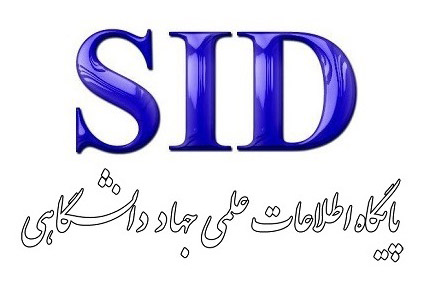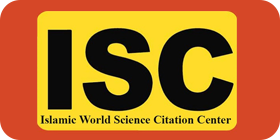اثربخشی توانبخشی روانی دوساهو و فلورتایم بر نظریه ذهن و تصویرسازی حرکتی دانش آموزان 10-6 سال مبتلا به اختلال طیف اوتیسم با عملکرد بالا
کلمات کلیدی:
توانبخشی روانی- حرکتی, فلور تایم, نظریه ذهن, دانش آموزان اتیسمچکیده
هدف: پژوهش حاضر با هدف بررسی اثربخشی دو روش توانبخشی روانی- حرکتی (دوسا -هو) و فلور تایم بر نظریه ذهن دانش آموزان اتیسم با عملکرد بالا انجام شد. روششناسی: پژوهش حاضر به لحاظ هدف از نوع پژوهشهای کاربردی و از نظر نحوه گردآوری اطلاعات از نوع مطالعات مداخلهای و تحقیقات نیمه آزمایشی با طرح پیش آزمون - پس آزمون تک گروهی با گروه کنترل و پیگیری انجام شد. جامعه آماری این پژوهش شامل کلیه کودکان مبتلا به اتیسم پسر 6 تا 10 ساله با عملکرد بالا در شهر تهران بودند که در سال 1402-1403 در مدارس استثنایی شهر تهران مشغول به تحصیل بودند. روش نمونهگیری پژوهش حاضر، نمونه گیری تصادفی به صورت خوشهای چند مرحلهای بود که از بین کودکان اوتیستیک که بر اساس تشخیص سازمان آموزش و پرورش استثنایی و بعد از اجرای پرسشنامه غربالگری اختلالات طیف اتیسم (ASSQ) مبتلا به اختلال اتیسم با عملکرد بالا شناخته شده و در مدارس استثنایی شهر تهران مشغول به تحصیل بودند، انتخاب شدند. این 45 نفر در سه گروه 15 نفری به صورت تصادفی قرار گرفتند. جهت گروه اول روش دوسا - هو، جهت گروه دوم مداخله فلورتایم انجام و برای گروه سوم که گروه کنترل بودند، هیچ مداخلهای انجام نشد. تحلیل دادهها با استفاده از آزمون t وابسته و ترسیم دیداری یا تحلیل نموداری گرافیکی استفاده شد. یافتهها: روش درمانی دوسا- هو بر خرده مقیاسهای نظریه ذهن در کودکان مبتلا به اختلال طیف اوتیسم تاثیر دارد. همچنین اندازه اثر نشان میدهد كه روش درمانی دوسا- هو بیشتر بر نظریه ذهن مقدماتی در کودکان مبتلا به اختلال طیف اوتیسم موثر بوده و بیشتر میتواند نظریه ذهن مقدماتی را افزایش دهد (0.01>p). نتیجهگیری: نتایج این پژوهش نشان داد که توانبخشی روانی دوسا-هو و فلورتایم بر بهبود نظریه ذهن و تصویرسازی حرکتی کودکان مبتلا به اوتیسم با عملکرد بالا تأثیر مثبت دارد و موجب بهبود مهارتهای شناختی و حرکتی آنها میشود.
دانلودها
مراجع
Alshirawi, M., & Hajji, H. (2023). The Effectiveness of a Training Program Based on Theory of Mind in Developing of Emotional Discrimination Among Children With Autism Spectrum Disorder. European Scientific Journal Esj, 2. https://doi.org/10.19044/esipreprint.2.2023.p64
Babaei, F., Abdollahi, M., Amini Gilvani, M., & Masoomifard, M. (2024). The Mediating Role of Theory of Mind in the Relationship Between Executive Functions and Marital Burnout Using Structural Equation Modeling and Artificial Neural Networks (SEM-ANN). International Journal of Education and Cognitive Sciences, 5(4), 62-73. https://doi.org/10.61838/kman.ijecs.5.4.7
Bayat, M. R. (2016). Comparison of the Effectiveness of Applied Behavior Analysis Training, Floortime-Based Play Therapy, and Their Combination in Improving Communication and Social Skills of Children with Autism Spectrum Disorders in Andimeshk Doctoral Dissertation, Faculty of Educational Sciences and Psychology, Shahid Chamran University of Ahvaz]. https://elmnet.ir/doc/10948611-35205
Bozkurt, A. (2024). The Relationship Between Giftedness and Sex and Children’s Theory of Mind Skills and Social Behavior. Children, 11(2), 253. https://doi.org/10.3390/children11020253
Cebula, K. R., & Wishart, J. G. (2008). Social cognition in children with Down syndrome. International Review of Research in Mental Retardation, 35, 43-86. https://doi.org/10.1016/S0074-7750(07)35002-7
Dahlgren, S., Sandberg, A. D., & Larsson, M. (2010). Theory of mind in children with severe speech and physical impairments. Research in Developmental Disabilities, 31(2), 617-624. https://doi.org/10.1016/j.ridd.2009.12.010
Diop, S., Turmes, L., Specht, C., Seehagen, S., Juckel, G., & Mavrogiorgou, P. (2022). Capacities for meta-cognition, social cognition, and alexithymia in postpartum depression. Psychiatry research, 309, 114430. https://doi.org/10.1016/j.psychres.2022.114430
Doskas, T., Vavougios, G. D., Karampetsou, P., Kormas, C., Synadinakis, E., Stavrogianni, K., & Vadikolias, Κ. (2021). Neurocognitive impairment and social cognition in multiple sclerosis. International Journal of Neuroscience, 1-16. https://doi.org/10.1080/00207454.2021.1879066
Ferguson, F. J., & Austin, E. J. (2010). Associations of trait and ability emotional intelligence with performance on Theory of Mind tasks in an adult sample. Personality and individual differences, 49, 414-418. https://doi.org/10.1016/j.paid.2010.04.009
Fisher, N., & Happe, F. (2005). A training study of Theory of Mind and executive function in children with autistic spectrum disorders. Journal of Autism and Developmental Disorders, 35(6), 757-771. https://doi.org/10.1007/s10803-005-0022-9
Grady, C. L., & Keightley, M. L. (2002). Studies of altered social neuroimaging. Canadian Journal of Psychiatry, 47(4), 327-355. https://doi.org/10.1177/070674370204700403
Harris, M. J., Best, S. C., Moffat, J. V., Spencer, D. M., Philip, C. M. R., Power, J. M., & Johnstone, C. E. (2008). Autistic traits and cognitive performance in young people with mild intellectual impairment. Journal of Autism and Developmental Disorders, 38, 1241-1249. https://doi.org/10.1007/s10803-007-0502-1
Hua Feng, Y., Shuling, T., & Gwendolyn, C. (2008). The Effects of Theory-of-Mind and Social Skill Training on the Social Competence of a Sixth-Grade Student With Autism. Journal of Positive Behavior Interventions, 10(4), 228-233. https://doi.org/10.1177/1098300708319906
Huang, Y.-J., Chen, T.-T., & Tseng, H. H. (2023). Mentalizing in a Movie for the Assessment of Social Cognition (MASC) : The Validation in a Taiwanese Sample. https://doi.org/10.21203/rs.3.rs-2650269/v1
Kakojoybari, A. A., Shaghaghi, F., & Baradaran, M. (2013). Development of Social Cognition Based on Theory of Mind in Children. Social Cognition Journal, 1(2), 33-40. https://sc.journals.pnu.ac.ir/article_301.html?lang=en
Khodabakhshi, M., Malekpour, M., & Abedi, A. (2021). The impact of training based on theory of mind on mentalizing performance, emotion regulation, and executive functions in children with autism spectrum disorders. Iranian Journal of Clinical Psychiatry and Psychology, 21(2), 155-166. https://www.sid.ir/paper/16897/
Koch, C., & Hasbrouk, L. (2013). Exploring the Link between Physical Activity, Fitness and Cognitive Function. https://www.isbe.net/Documents_EPE/iphi-epetf-rpt0313.pdf
Kouklari, E.-C. (2023). Cross-Sectional Developmental Trajectories of Executive Function and Relations to Theory of Mind in Autism Spectrum Disorder. Journal of Pediatric Neuropsychology, 9(3), 157-174. https://doi.org/10.1007/s40817-023-00148-2
Krämer, K., Vetter, A., Schultz-Venrath, U., Vogeley, K., & Reul, S. (2021). Mentalization-Based Treatment in Groups for Adults With Autism Spectrum Disorder [Brief Research Report]. Frontiers in psychology, 12. https://doi.org/10.3389/fpsyg.2021.708557
Lackner, C. L., Bowman, L. C., & Sabbagh, M. A. (2010). Dopaminergic functioning and preschoolers' theory of mind. Neuropsychologia, 48(6), 1767-1774. https://doi.org/10.1016/j.neuropsychologia.2010.02.027
Lackner, C. L., owman, Lindsay C, Sabbagh, Mark A. (2010). Dopaminergic functioning and preschoolers’ theory of mind. Neuropsychologia, 48(6), 1767-1774. https://doi.org/10.1016/j.neuropsychologia.2010.02.027
Livingston, L. A., Carr, B., & Shah, P. (2019). Recent advances and new directions in measuring theory of mind in autistic adults. Journal of Autism and Developmental Disorders, 49(4), 1738-1744. https://doi.org/10.1007/s10803-018-3823-3
Mansouri, M., Chelbanlou, G., Maleki Rad, A., & Mosaddad, A. A. (2010). Comparison of Factors Affecting the Development of Theory of Mind Levels in Children with Autism and Typically Developing Children. Journal of Medical Sciences, Arak University of Medical Sciences, 13(4), 115-125. http://jams.arakmu.ac.ir/browse.php?a_id=618&sid=1&slc_lang=en
Maoz, H., Gvirts, H. Z., Sheffer, M., & Bloch, Y. (2019). Theory of Mind and empathy in children with ADHD. Journal of Attention Disorders, 23(11), 1331-1338. https://doi.org/10.1177/1087054717710766
Nejati, V. (2023). Remediation of Theory of Mind in Children With Autism Spectrum Disorders: Effectiveness and Transferability of Training Effects to Behavioral Symptoms. Clinical Child Psychology and Psychiatry, 29(1), 259-273. https://doi.org/10.1177/13591045231208580
Öztop, F., Bilač, S., & Kutuk, Y. (2024). Improving Empathy and Peer Relationships in Adolescents: A Social Cognition Training Approach. International Journal of Education and Cognitive Sciences, 5(2), 23-30. https://doi.org/10.61838/kman.ijeas.5.2.4
Peterson, C. (2014). Theory of mind understanding and empathic behavior in children with autism spectrum disorders. International Journal of Developmental Neuroscience, 39, 16-21. https://doi.org/10.1016/j.ijdevneu.2014.05.002
Quesque, F., & Rossetti, Y. (2020). What do theory-of-mind tasks actually measure? Theory and practice. Perspectives on Psychological Science, 15(2), 384-396. https://doi.org/10.1177/1745691619896607
Razza, R. A., & Blair, C. (2009). Association among false-belief understanding, executive function, and social competence: A longitudinal analysis. Journal of Applied Developmental Psychology, 30(3), 332-343. https://doi.org/10.1016/j.appdev.2008.12.020
Rueda, P., & Schonert‐Reichl, K. A. (2014). Empathic Abilities and Theory of Mind in Adolescents With Asperger Syndrome: Insights From the Twenty-First Century. Review Journal of Autism and Developmental Disorders, 1(4), 327-343. https://doi.org/10.1007/s40489-014-0026-5
Salehi Kamroodi, M., Ahmadi, A. A., & Soleimani, M. (2022). The effectiveness of child-centered play therapy on the theory of mind in children with autism spectrum disorder. Early Childhood Health and Education Quarterly, 3(1), 141-129. http://jeche.ir/browse.php?a_id=64&sid=1&slc_lang=en
Schulte, M., Trujillo, N., Rodríguez-Villagra, O. A., Salas, N., Ibañez, A., & Carriedo, N. (2022). The role of executive functions, social cognition and intelligence in predicting social adaptation of vulnerable populations. Scientific reports, 12(1), 18693-186103. https://doi.org/10.1038/s41598-022-21985-9
Seiler, B. D., Newman-Norlund, R. D., & Monsma, E. V. (2017). Interindividual neural differences in movement imagery abilities. Psychology of Sport and Exercise, 30, 153-163. https://doi.org/10.1016/j.psychsport.2017.02.007
Tager-Flusberg, H., & Joseph, R. M. (2005). How language facilitates the development of theory of mind in children with autism. Developmental Psychology, 41(1), 45-55. https://psycnet.apa.org/record/2005-12116-014
Tsolakopoulos, D. (2023). Exploring Pragmatic Deficits in Relation to Theory of Mind and Executive Functions: Evidence From Individuals With Right Hemisphere Stroke. Brain Sciences, 13(10), 1385. https://doi.org/10.3390/brainsci13101385
Williams, D., & Happé, F. (2021). The impact of theory of mind training on social interactions in children with autism spectrum disorder: A systematic review. Autism Research, 14(2), 123-137.









